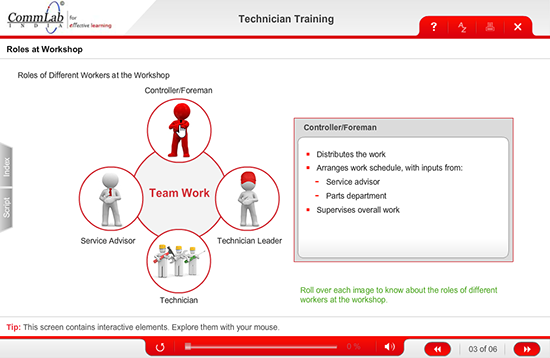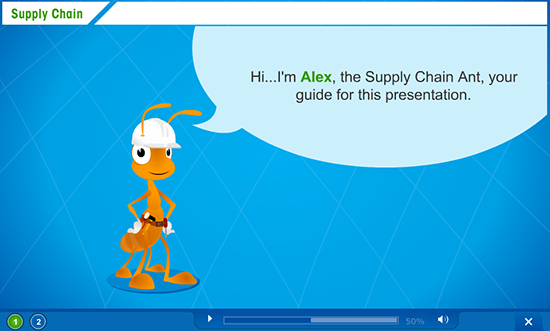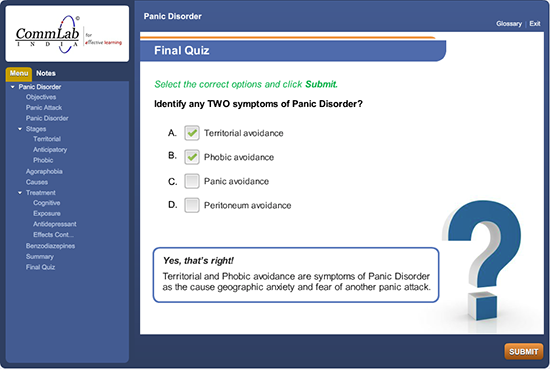Top 10 Instructional Design Tips for Effective eLearning

Instructional Design (ID) plays a crucial role in designing an engaging and effective e-learning course. The instructional designer employs ID strategies to create good e-learning courses that facilitate optimum knowledge transfer. This blog shares a few tips on instructional design to help improve your efforts of designing good e-learning courses.
1. Set effective learning objectives
As an instructional designer, you need to spell out the objectives of the course to your learners. They should clearly understand what to expect from the course. As adults, it is important that they know this. The objectives should explain how they will benefit by completing the course. This will motivate learners.

Experts suggest that when you present the learning objectives of a course, ensure you articulate the benefits of the course to learners, rather than the features of the course. They also caution against the temptation to highlight the benefits of the course in glorious terms. They suggest you clearly state in specific and measurable terms, what the learner will achieve at the end of each unit, module, or lesson in the course.
2. Use relevant content
Once the learning objectives of the course are set, ensure the content of the course is sufficient and relevant to meet the objectives. Every objective should be supported by the same amount of subject matter. Experts indicate you need to make hard choices when choosing relevant content because you must select only that content which is aligned with the objectives. If the content is not sufficient or relevant, you must develop it.
3. Visualize your content
You should visualize how your content will be presented. This is done by designing a storyboard. The storyboard determines how you will present the content, the learning you will demonstrate to the learner, and how to facilitate this learning.
A storyboard will help you visualize how the learner will go through the course from the start to the finish. Visualizing your content is important if you have to know what kind of scenarios, interactivities, or graphics you will need to include in the course.
4. Include scenarios
Scenarios help learners think and reiterate what they have learned after completing the course. They help them apply what has been learned. Scenarios based on workplace situations engage learners. Experts suggest using scenarios to build critical thinking skills. We used scenarios in a sales training course which teaches sales reps how to close a sale.

View this sample elearning course. You need to use relevant, problem-solving scenarios which are simple, realistic, and fit the purpose as suggested by experts.
5. Add interactivities
The course can be made more interesting and engaging when you use different kinds of interactivities. You can use click-on-tabs, images, notes, rollovers, avatars, visually appealing graphics, and simulations. They help you attract learners’ attention and help them retain knowledge.


6. Use gamification
Gamification or using games or game-based elements in your course makes it more engaging. They add elements of fun and competition to the learning process and improve knowledge retention in learners. For instance, a course on customer relations was made engaging when employees identified the different types of customers by playing a game.
Experts suggest that a game can be effective only if the design of the game matches the learning outcomes. They suggest introducing the game after building the appropriate context. This will help the learner understand the background information.
It is important to strike the right balance between instruction and entertainment when you introduce games, and choose the appropriate game based on the level of the learners.
7. Use case studies
Using case studies in e-learning promotes an interactive exchange between learners and teaches them problem solving skills. Since case studies resemble real world situations, they prepare learners to face such real-world challenges in the future.
Case studies are used to teach a specific skill or concept; learners learn how to collect and explore relevant facts through case studies.
8. Use interactive assessments
You need to use a variety of assessments such as match the following, dropdown, multiple select, drag and drop, and so on. The questions need to be challenging and help you measure how well learners have understood the course.

While on assessments, experts urge you to pay attention to the feedback you give learners. Ensure it is instant and explanatory. When the learner gets a question right, you need to tell him he is right and why. The same rule applies when he selects the wrong answer, but here, you can provide a hint about the right answer. This will guide him to the right answer. If he still gets is wrong, explain why he is wrong and what the correct choice is. This helps reinforce the key concepts of the topic on which he is tested.
9. Use effective audio and videos
Audio in a course should reduce cognitive load on the learners. The narration should be conversational. Here are some tips to make effective use of audio, it should:
- Explain visuals
- Be crisp
- Have a neutral accent
- Not be used to narrate the complete on-screen text
- Not use multiple voices
As for videos, expert tips include using them to present complex, specialized, or dry information; a person presenting such information can add the human touch and make it more engaging. Adding simple video clips in your course can increase audience engagement. Videos can be used effectively as models to display social interactions, especially for training on customer service or communication skills.
10. Make navigation easy
It is important to make the navigation easy for learners. They should be allowed to freely navigate through the course without any restrictions. Remember your learners are adults and do not like restricted navigation. They should be allowed to choose the topic they want to learn and go through the course as per their choice.
These are some of the instructional design tips you can use to enhance your courses. Want more tips? Download this free e-book where you will find more than 100 tips that will be your handy reference guide when designing courses. What’s more, the book includes valuable suggestions from our in-house experts. Download now!





